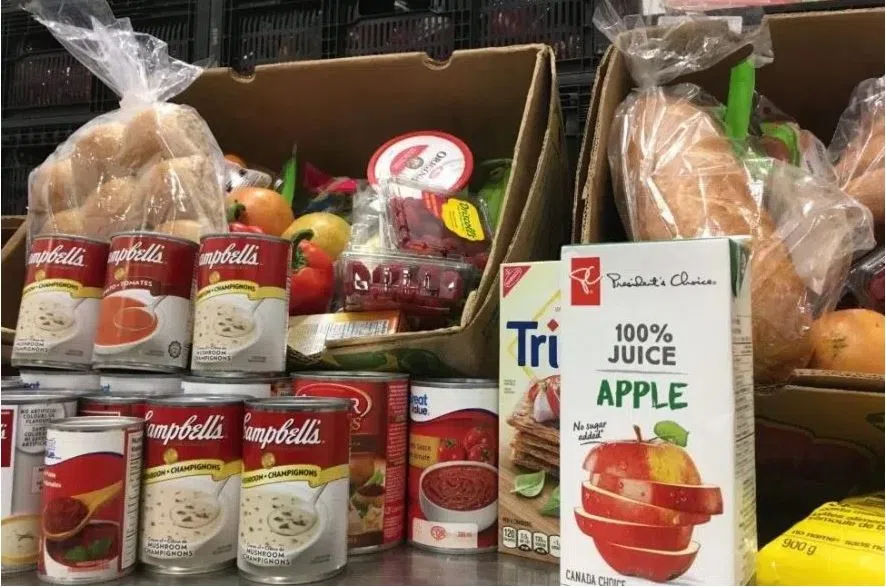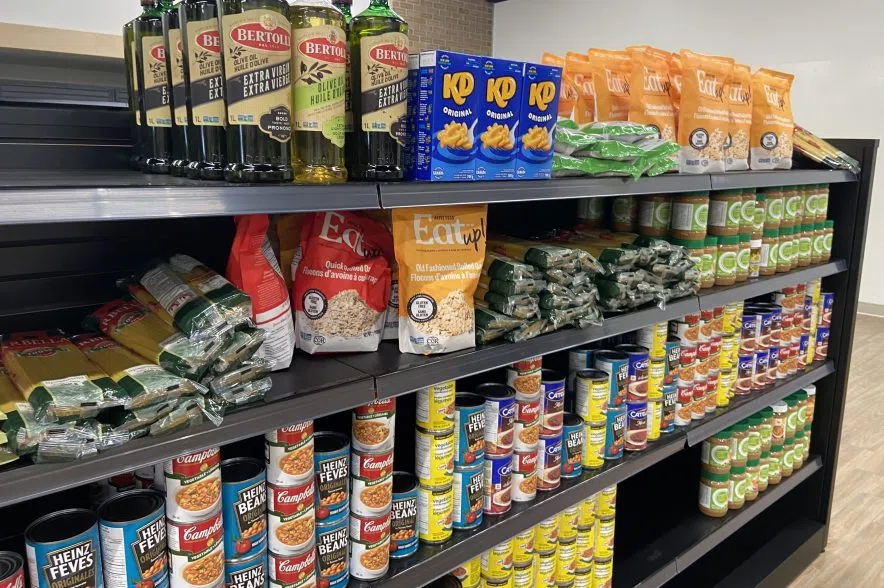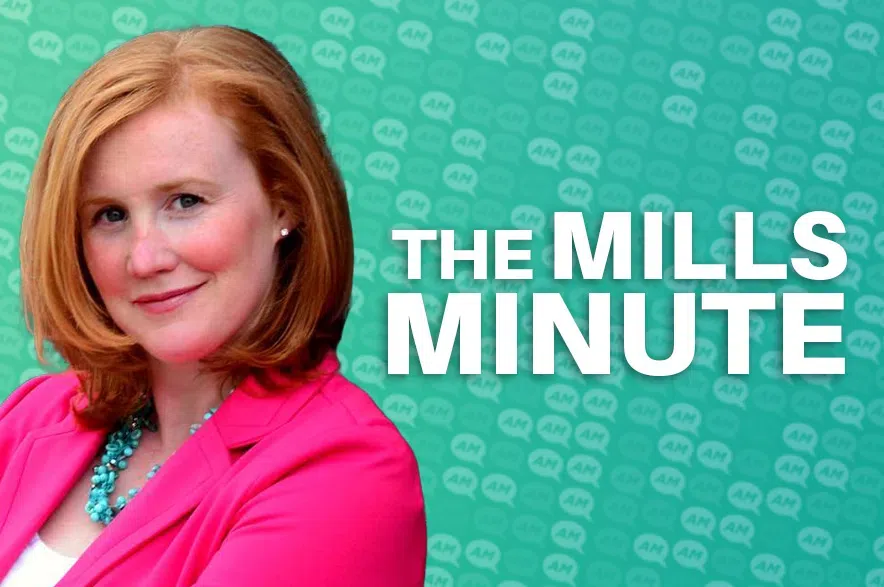Listen to the full interview here:
The following transcript has been edited for length and clarity.
MacPherson: John how did the holidays go at the Regina Food Bank?
Bailey: The holidays for us are always a super busy time, but we made it through with the support of our community. We got over 2,500 holiday hampers out, and that’s in addition to the close to 470 hampers we’re doing a week. So the need is definitely there, but with the support of the community, we’re able to do our best to meet that demand.
How about for you Laurie O’Connor, how was the Christmas holiday at the Saskatoon Food Bank and Learning Centre?
O’Connor: It’s really actually quite a lovely time of year to see the support of the community outpouring for folks who are struggling. We were really thrilled to see so many people come to visit us, both those who needed our help and those who wanted to provide support.
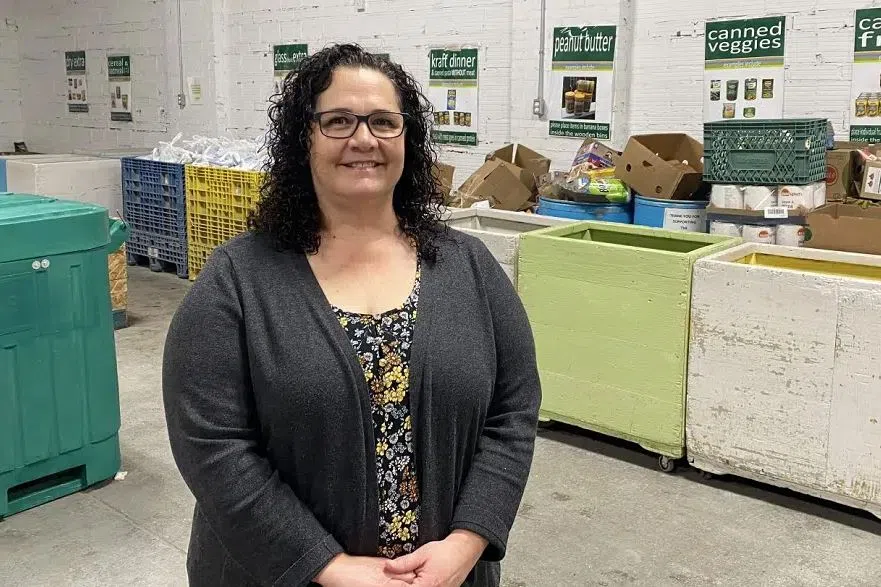
Laurie O’Connor, executive director of the Saskatoon Food Bank and Learning Centre. (650 CKOM file photo)
Canadians identified the affordability crisis and the rising cost of living as the number one news story of the year. Are you seeing that reflected in the number of clients coming in to take advantage of the food bank services?
O’Connor: We most certainly are. I’ve been talking about around a 25 per cent increase in folks using the food bank program. We know just from the number of new folks that are having to turn to the food bank program that this is a real struggle. And we’re buoyed by the enormous support and generosity of the community here in Saskatoon.
How about at the Regina Food Bank, were you seeing that same kind of level of increase?
Bailey: Unfortunately we’re seeing the same thing here in Regina. It’s not just the year this year, it’s a continuing trend for the past four or five years and it’s really quite overwhelming to our team. I’d echo what Laurie says, that we’re not able to do it without the support of our communities. But I mean when you talk about that level of of sort of need and demand, it’s not being driven by any one segment. It’s all sorts of folks.
One of the largest growing groups of folks accessing our food bank are those who have employment income as their primary source and paychecks are just not keeping up with the cost of living demands. I mean you look at people getting two, three, four per cent cost of living bumps, and basically, to keep your car gassed up and your rent paid is eight or nine per cent. It’s getting harder and harder for people in our community keep up.
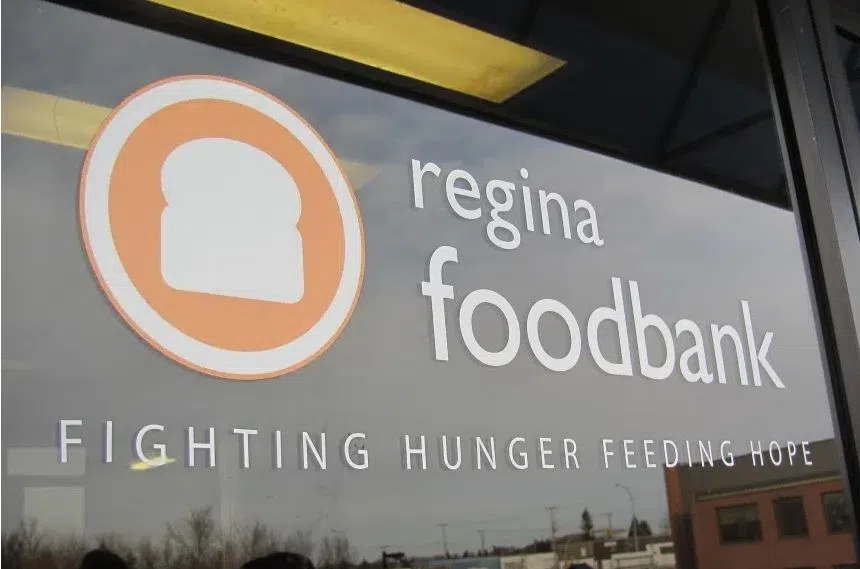
The Regina Foodbank has continued to see numbers of clients climb over the years. (980 CJME file photo)
Did you get enough of a boost in donations over the holidays to keep pace with that increase at the Regina Foodbank this year?
Bailey: Well, I think this year we had another year of tremendous generosity from our community that’s allowed us to keep up. I think the challenge right now is not necessarily keeping up with current demand, but forecasting out how much it’s going to grow.
Because as we look at it in our city, even with those big increases of 20, 25, 30 per cent growth in the number of people we are serving … we’re still not serving 5,000 to 6,000 people who we’d like to be able to serve just to meet the total demand.
So while the support has always been inspiring and a real bolstering of our ability to do the work we do, it has come to a point where the demand is going to start to outpace that eventually. We’re likely not in that position yet, but we can see that coming.
Read more:
- Saskatoon Food Bank nears $12M goal for new Ave. P location
- Regina Food Bank says proposed GST pause is ‘positive’ but urges caution
- Food banks in Regina, Saskatoon get million-dollar boost from K+S
Are you seeing similar trends in Saskatoon?
O’Connor: Absolutely. We’re resourceful (and) really trying to ensure that we can meet the need. I suspect there are many folks who aren’t turning to the food bank who could be, and we worry about them.
We know that food banks weren’t designed or even thought of to meet this kind of need. So these are systemic issues which we need to consider — how we can address, as opposed to how we can feed more people.
I think it’s important that we’re here, and both the Regina Food Bank and the Saskatoon Food Bank and Learning Centre have been doing really great work for over four decades. I think it’s important to recognize the value that we bring to our communities. We do a ton of advocacy work as well so that instead of those numbers going up, we’re hopefully driving a push for those numbers to come down.
Tell us about Regina’s Food Hub project, and what the year looked like.
Bailey: It was certainly a busy year for our food bank. I think the banner headline was the opening of of the with the Food Hub in downtown Regina, which is a market style food bank.
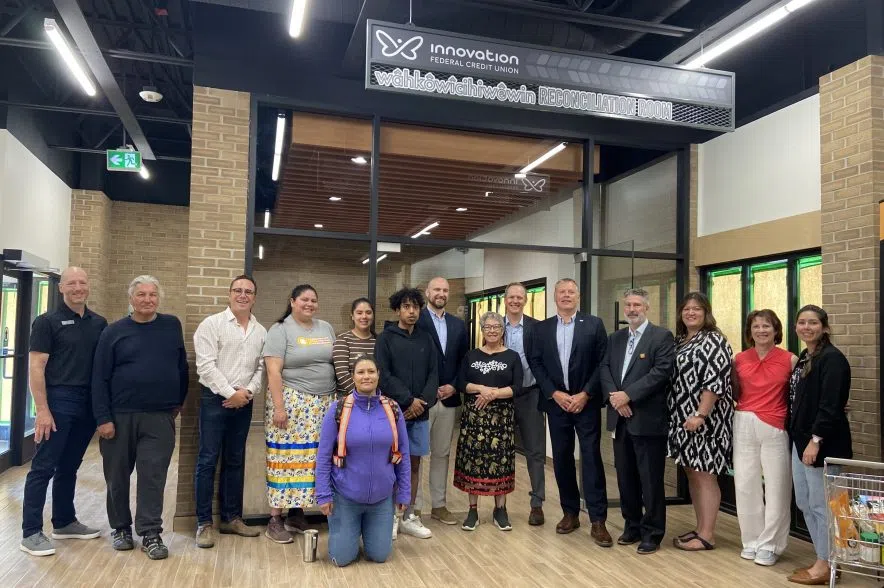
The Wâhkôwîcihiwêwin Room at the new Regina Foodbank hub will be a safe space for all community members. (Nicole Garn/980 CJME)
People still need an appointment, and need to be a food bank client, but what it allows them to do is immerse themselves in a full retail environment, from the shelves to the placement of the fridges, the product, product selection, right down to checking out using a point-of-sale system.
Now the groceries are all free, but it de-institutionalizes the process of food banking, and that was really driven one by our our amazing donors, but also by the food and ag sector that that has allowed us to continue to stretch every dollar by going up that value chain right to right the farm gate, where we can get product really cheaply but still have the highest quality product.
How’s the reception been at the new food hub?
Bailey: It’s been incredible, we’ve filled up all the appointments from day one, and continue to expand.
We’re really pushing hard to get as many people through there, because we just think it’s a better way to serve our community, and we know that from research just being able to pick your food like that makes people feel 10 per cent less food insecure, so it’s a really important initiative.
The Saskatoon Food Bank and Learning Centre has been planning a big move for some time. Can you tell us about that?
O’Connor: First, I want to say how proud we are and how much we admire the Regina food bank for taking such a big step.
We continue to fund-raise, and hope to put a shovel in the ground for our new facility, which will be better and purpose built, so it’ll be able to double the amount of food that we move through it, plus double the programming that we do outside of the food-bank program.

The current food bank is located at 202 Avenue C S in Saskatoon. The future site is set for the corner of Avenue P and 17th Street. The new facility hopes to open in August, 2025. (650 CKOM file photo)
What does the food bank in Saskatoon need right now?
O’Connor: For folks to continue thinking about us throughout the whole year. People have been super generous and top of mind are the kinds of things that that folks have been donating — often the most nutritious food possible, and easiest to prepare. Funds are great because they go really far for food banks and then always that gift of time. We have a wonderful volunteer coordinator who knows our needs.
What does the food bank in Regina need right now?
Bailey: The biggest gift people can give this time of year is is to remind themselves that hunger is a 12-month issue in our community, so gifts of time, gifts of money are always gratefully received. If you are shopping and want to pick up extra items, we always prioritize those shelf-stable canned proteins (like) pasta, pasta sauce — things that allow us to process quickly and get out. We’d like to turn those gifts of cash into into the fresh produce and and fresh proteins.
Cash is king, and we can turn $1 into three meals, which is something we’re really proud of and it is because folks have been so generous.
Read more:
